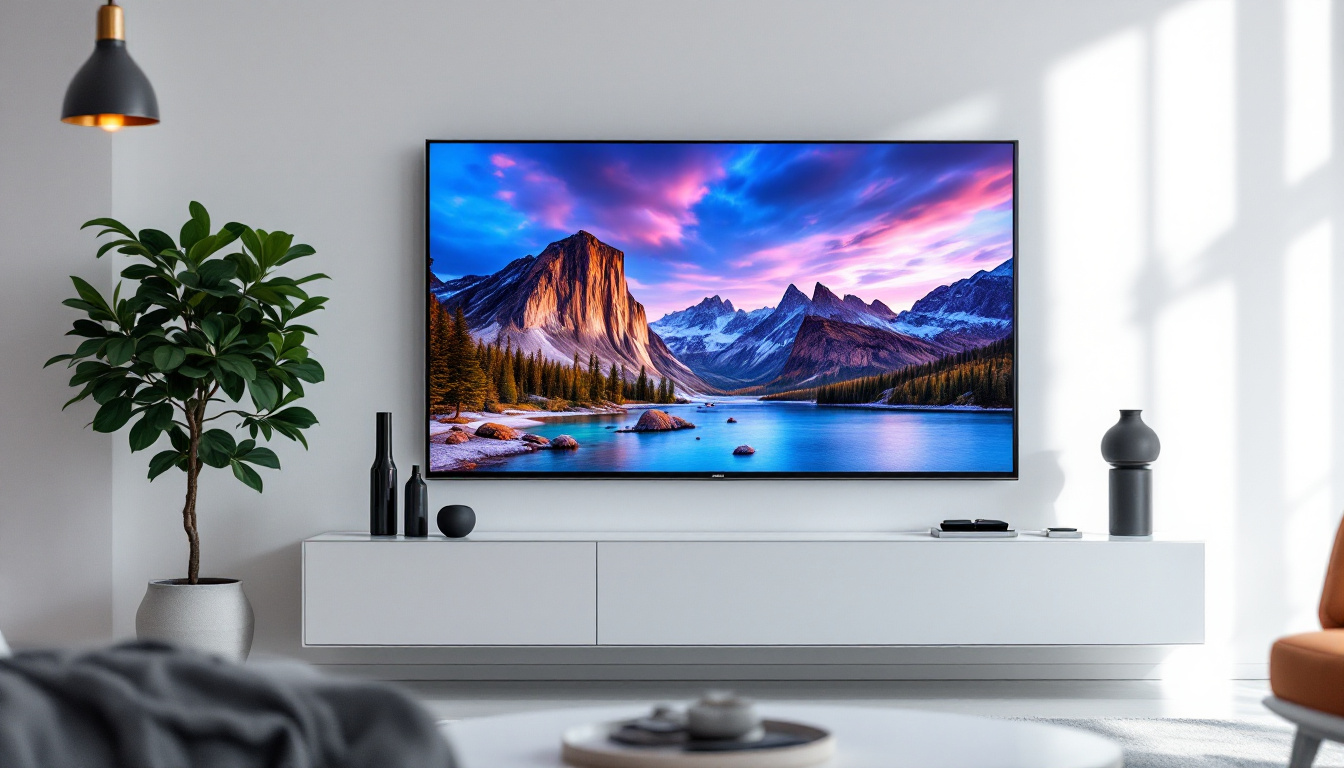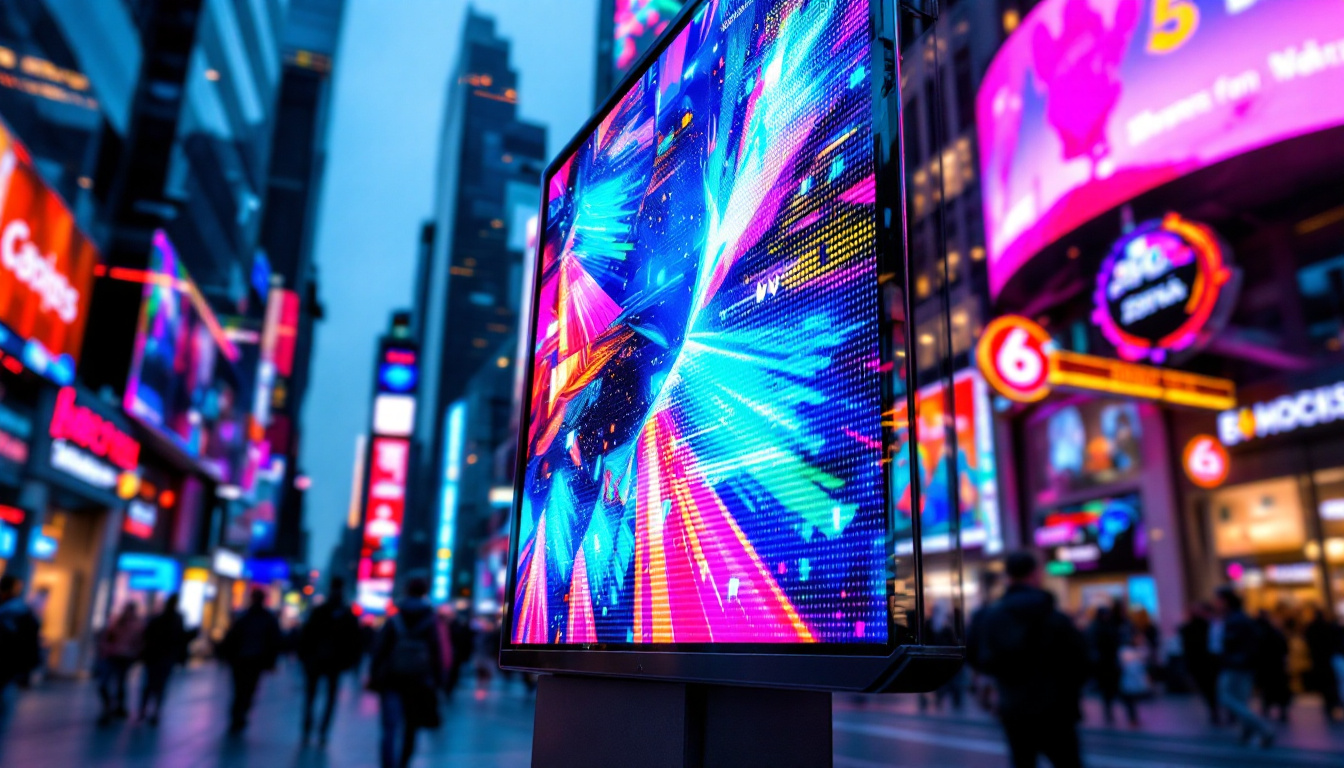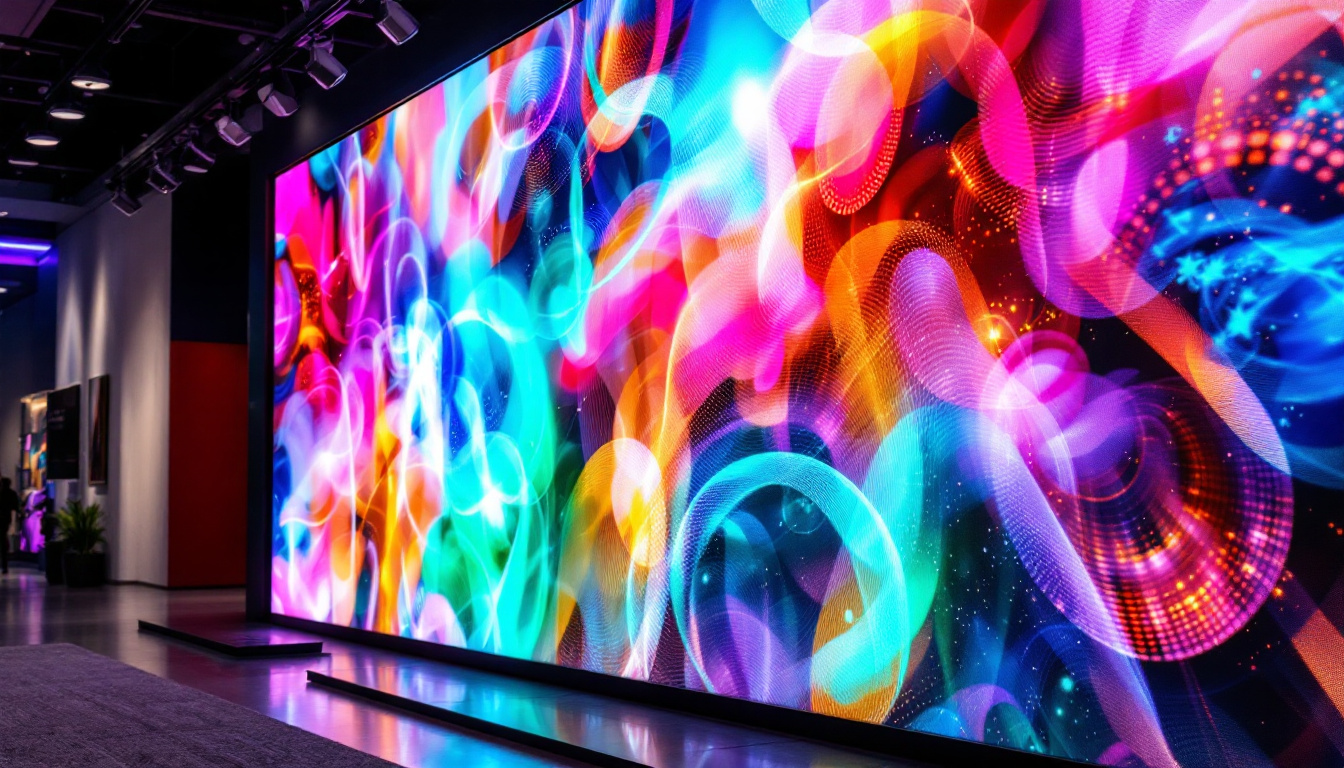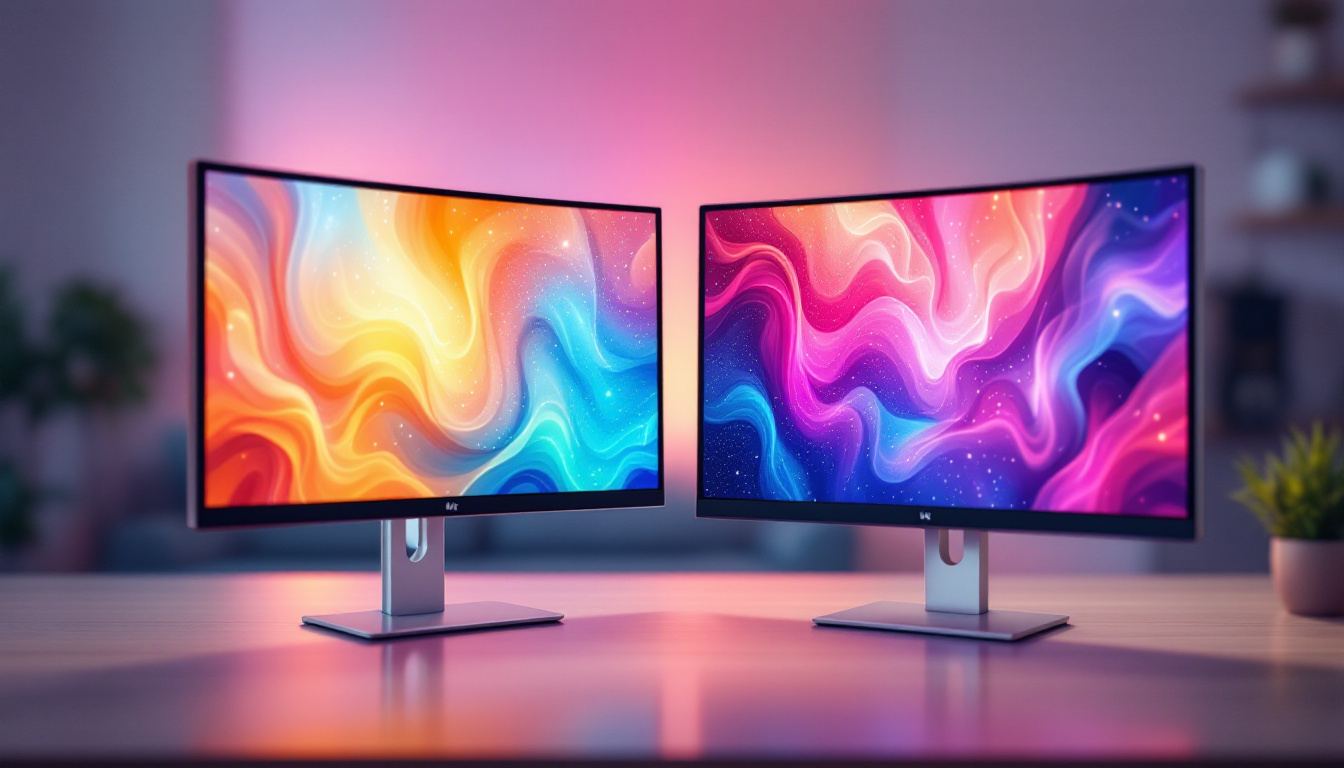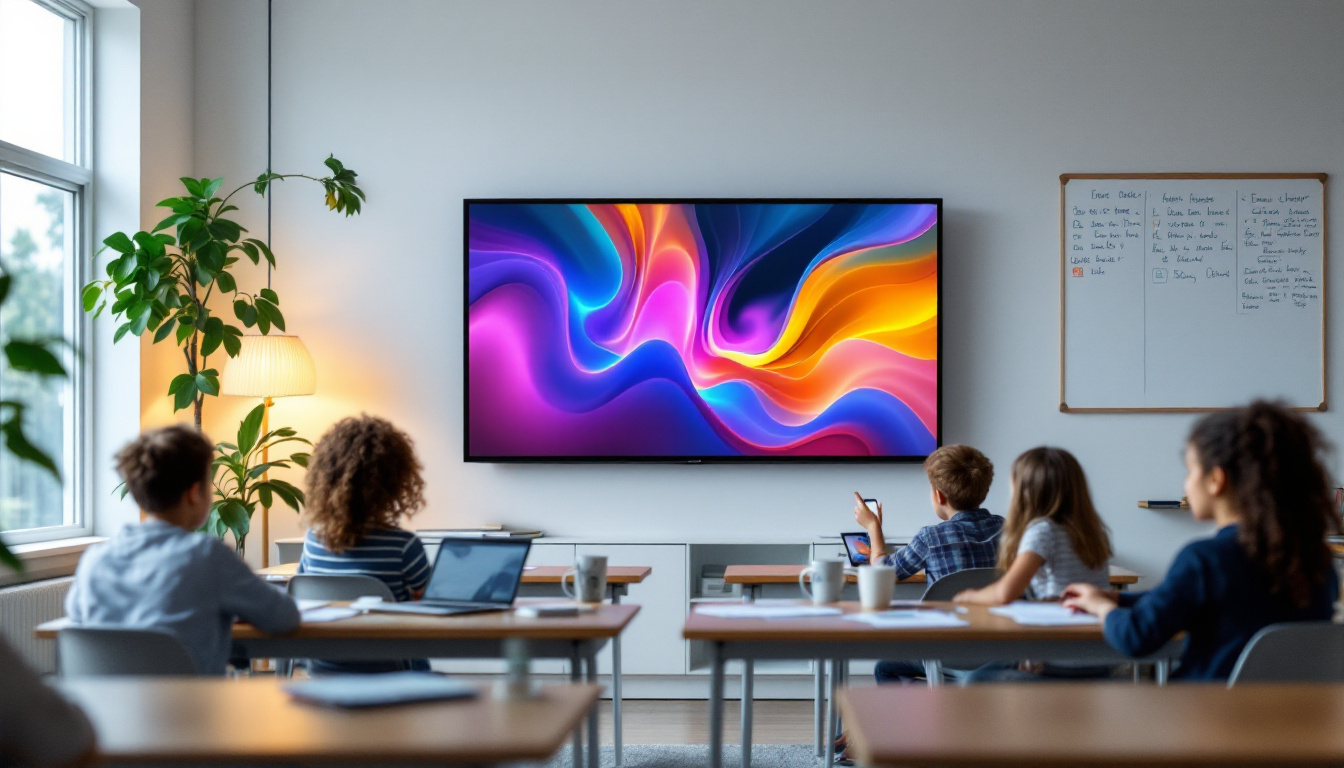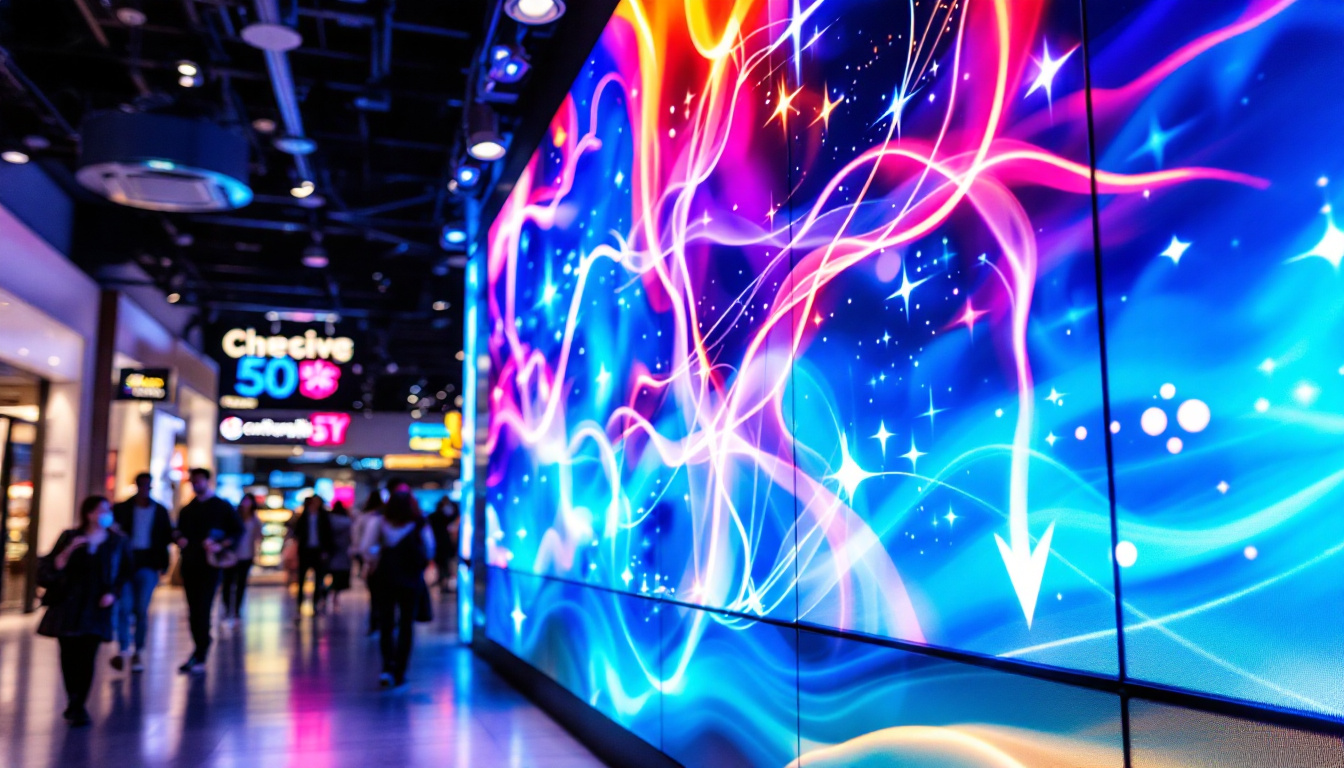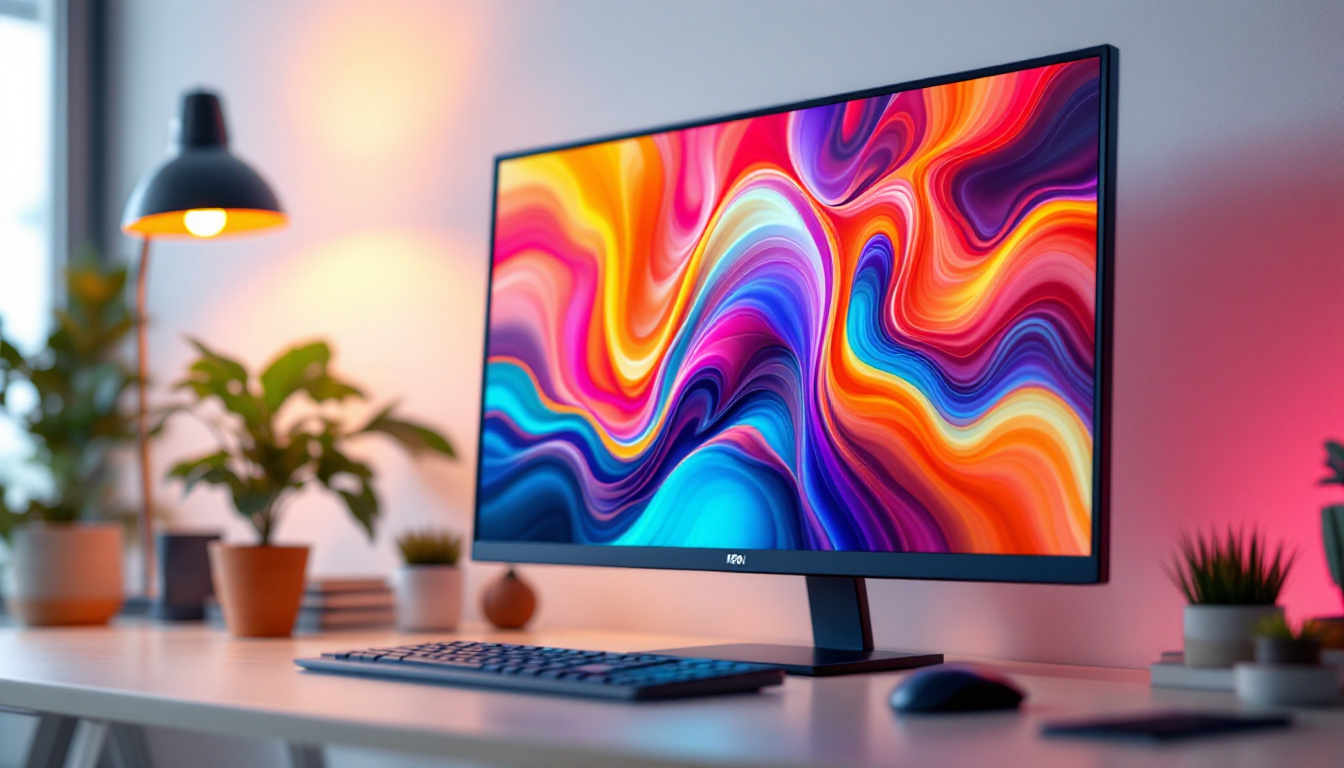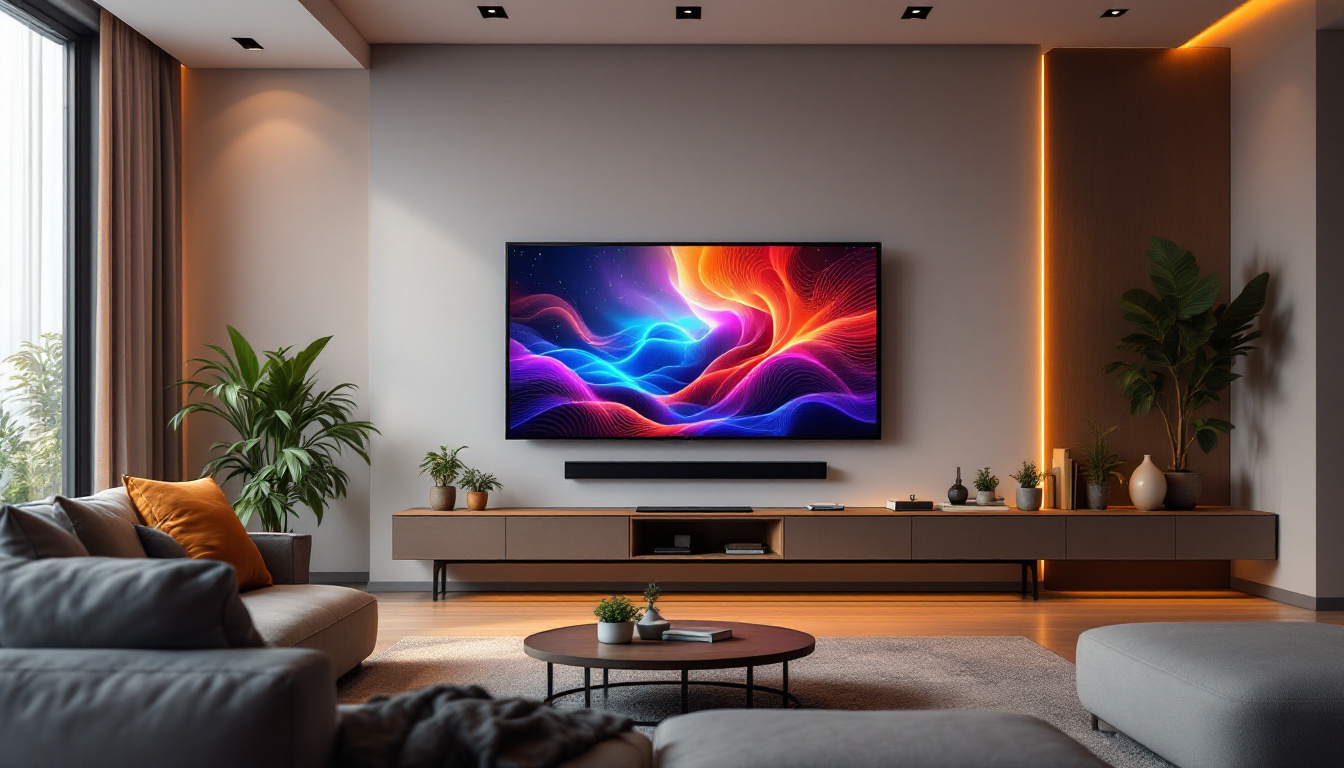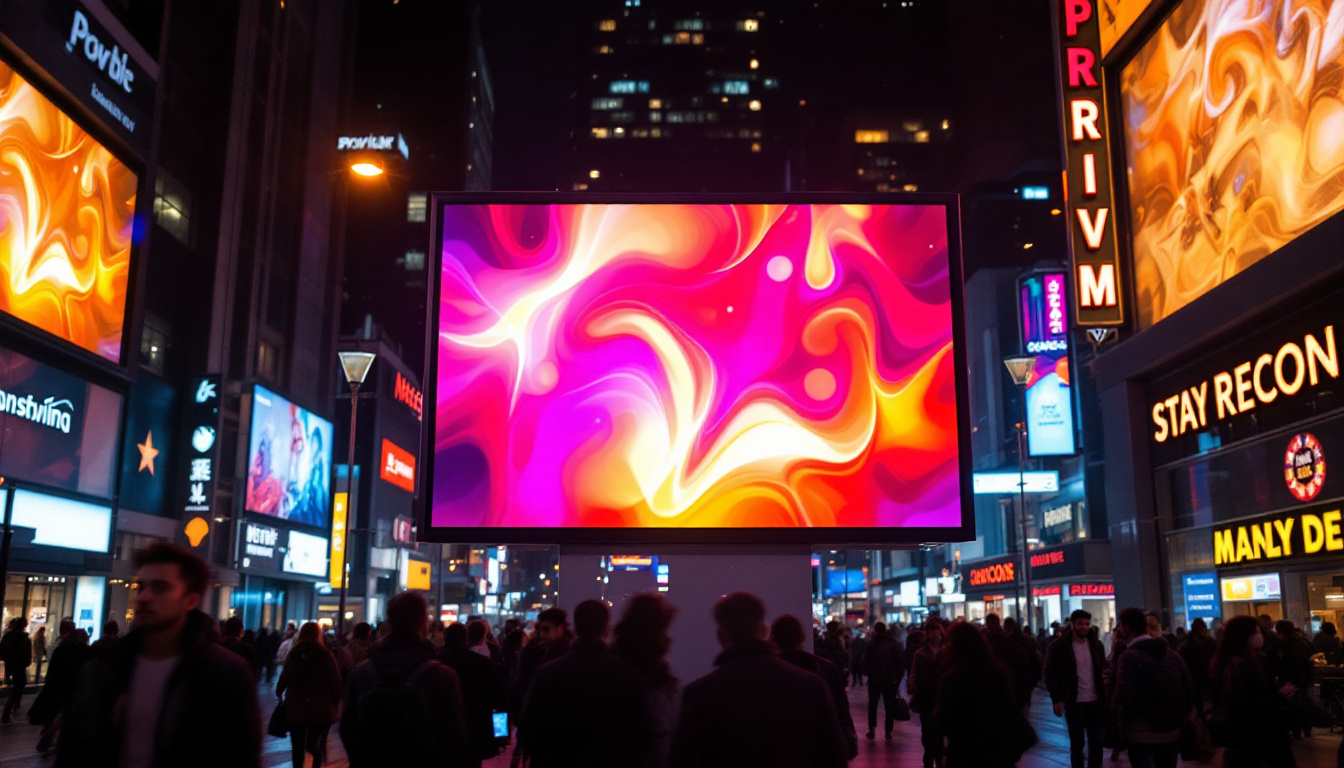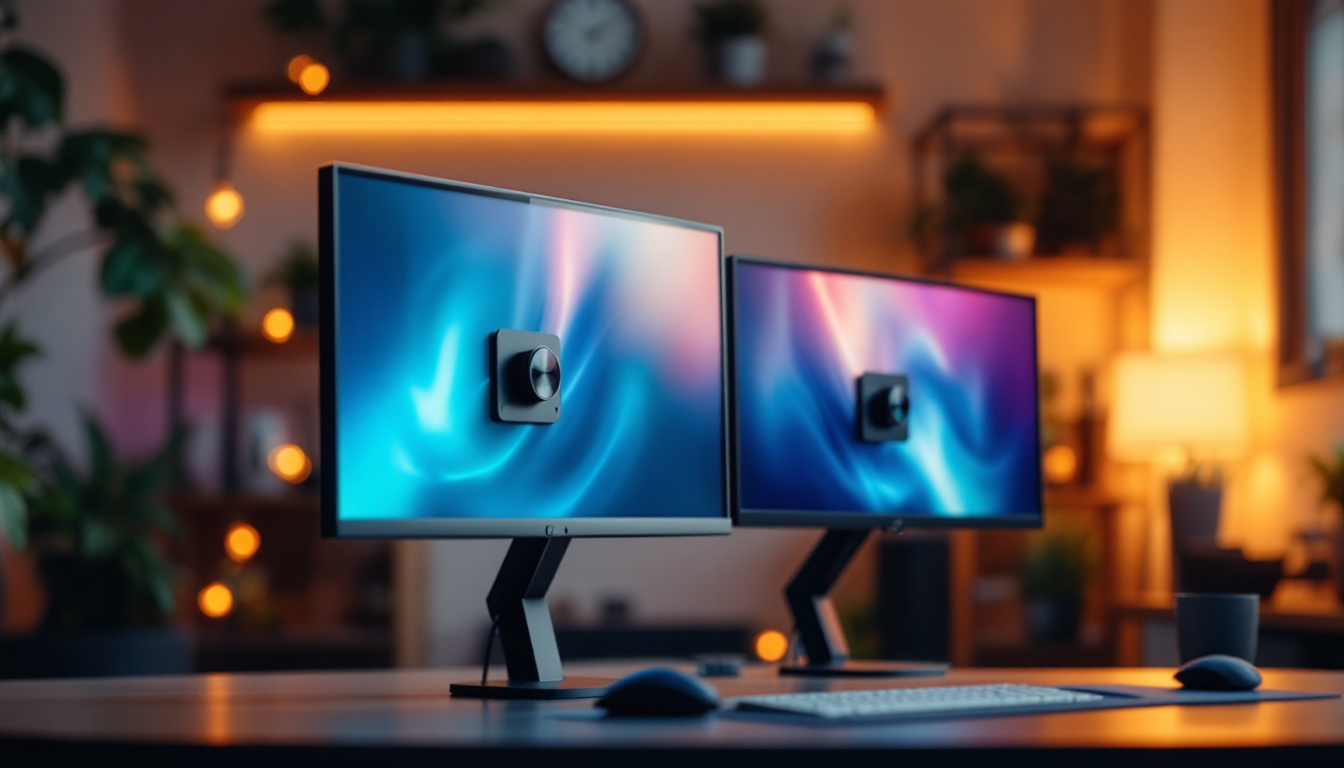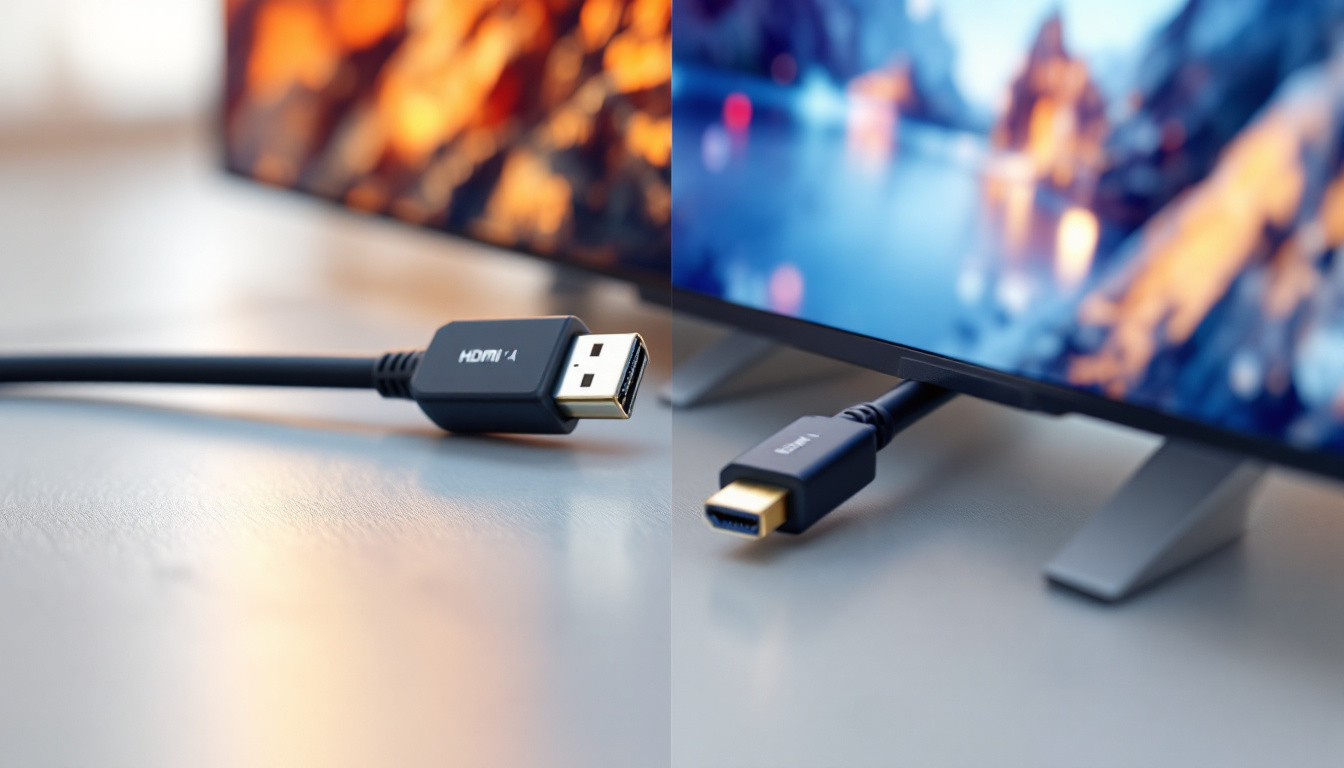21:9 TV: LED Display Explained
The world of home entertainment has seen remarkable advancements over the years, with various display technologies revolutionizing the way we consume content. One such innovation is the 21:9 aspect ratio television, commonly known as ultrawide TVs. These displays offer a cinematic experience that is increasingly popular among movie enthusiasts and gamers alike. This article delves into the intricacies of 21:9 TVs, particularly focusing on LED display technology.
Understanding the 21:9 Aspect Ratio
The aspect ratio of a television refers to the proportional relationship between its width and height. The 21:9 aspect ratio, also known as ultrawide, is designed to mimic the dimensions of a traditional cinema screen. This format provides a broader field of view, enhancing the immersive experience for viewers. With a 21:9 display, users can feel as though they are part of the action, whether they are watching a thrilling movie or engaging in an intense gaming session.
Comparison with Standard Aspect Ratios
Most conventional televisions operate on a 16:9 aspect ratio, which is suitable for standard HD content. However, as cinematic films and video games increasingly adopt the 21:9 format, the need for a compatible display has grown. The wider screen allows for more visual information, reducing the black bars that often appear on the top and bottom of the screen during movie playback. This aspect ratio not only enhances the viewing experience but also aligns more closely with the way our eyes naturally perceive the world, making it a more comfortable option for extended viewing periods.
This aspect ratio is particularly advantageous for action-packed films and games, where peripheral vision plays a crucial role in the overall experience. The additional screen real estate allows for a more engaging and dynamic viewing experience, making it a favored choice for many consumers. Moreover, the 21:9 format can also be beneficial for productivity, as it provides ample space for side-by-side applications, making it easier to work on multiple tasks simultaneously without the need for dual monitors.
Benefits of a 21:9 Display
One of the most significant advantages of a 21:9 display is the enhanced cinematic experience it provides. Viewers can enjoy films as they were intended to be seen, without the distractions of letterboxing. Additionally, this aspect ratio is ideal for multitasking, allowing users to split the screen for different applications or content. For instance, one could easily watch a tutorial video while simultaneously taking notes or browsing the web, all on the same screen without feeling cramped.
Furthermore, gamers benefit immensely from the wider field of view, as it can enhance gameplay by providing a more immersive experience. This is particularly true for first-person shooters and racing games, where situational awareness is critical. The ultrawide format can reveal more of the game environment, allowing players to spot enemies or obstacles that would otherwise be out of sight on a standard display. Additionally, many gaming monitors with a 21:9 aspect ratio come equipped with high refresh rates and adaptive sync technologies, further elevating the gaming experience by delivering smoother visuals and reducing screen tearing.
LED Technology in 21:9 TVs
LED (Light Emitting Diode) technology has become the standard for modern televisions, including 21:9 models. This technology offers several advantages over traditional LCD and plasma displays, making it a popular choice among consumers.
How LED Displays Work
LED TVs utilize a backlighting system that consists of numerous tiny LEDs to illuminate the screen. These LEDs can be arranged in various configurations, such as edge-lit or full-array, to enhance picture quality. Edge-lit displays use LEDs placed along the edges of the screen, while full-array displays have a grid of LEDs behind the entire screen, allowing for better contrast and color accuracy.
The use of LED technology allows for thinner and lighter TVs, making them more aesthetically pleasing and easier to mount on walls. Additionally, LED displays are known for their energy efficiency, consuming less power compared to older technologies. This energy efficiency not only helps reduce electricity bills but also contributes to a smaller carbon footprint, making LED TVs a more environmentally friendly choice for consumers.
Picture Quality and Color Performance
One of the standout features of LED displays is their ability to produce vibrant colors and deep blacks. This is particularly important for a 21:9 TV, as the wider screen can amplify any deficiencies in color performance. Many modern LED TVs also support HDR (High Dynamic Range), which enhances contrast and color depth, providing a more lifelike viewing experience.
Moreover, advancements in local dimming technology allow for improved contrast ratios by dimming specific areas of the screen while keeping others bright. This results in a more dynamic image, particularly in scenes with both dark and bright elements. The combination of local dimming and HDR capabilities means that viewers can enjoy a cinematic experience right in their living rooms, with details in shadows and highlights that were previously hard to discern. Additionally, the wider 21:9 aspect ratio is ideal for cinematic content, as it matches the format used by many films, allowing for a more immersive experience that draws viewers into the action.
Furthermore, the color gamut of LED displays has significantly improved with the introduction of quantum dot technology. This innovation allows for a broader spectrum of colors, resulting in more accurate and vibrant hues. As a result, viewers can experience their favorite movies and shows with a level of detail and richness that enhances the storytelling. Coupled with features like motion smoothing and frame interpolation, 21:9 LED TVs are equipped to deliver smooth, fluid motion, making them perfect for fast-paced action sequences in sports and films alike.
Choosing the Right 21:9 TV
When selecting a 21:9 TV, several factors should be considered to ensure that the chosen model meets the viewer’s needs and preferences. Understanding these factors can help consumers make an informed decision.
Screen Size and Viewing Distance
Screen size is a critical consideration when purchasing a 21:9 TV. The ideal size often depends on the viewing distance; a larger screen may be preferable for larger rooms, while a smaller screen may suffice for more compact spaces. A general guideline is to sit at a distance that is 1.5 to 2.5 times the diagonal size of the screen for optimal viewing.
Additionally, the layout of the room and the placement of furniture can influence screen size choice. Ensuring that the TV is at eye level when seated can enhance comfort and viewing pleasure.
Resolution and Refresh Rate
Resolution is another crucial factor, with most modern 21:9 TVs offering 4K Ultra HD (3840 x 1600 pixels) or even higher resolutions. Higher resolution displays provide sharper images and more detail, which is particularly beneficial for large screens. Furthermore, a higher refresh rate, typically 120Hz or more, can enhance motion clarity, making it ideal for fast-paced content such as sports and action movies.
Consumers should also consider the types of content they will be viewing. For example, if gaming is a priority, a TV with a high refresh rate and low input lag will provide a better experience.
Connectivity Options
Modern 21:9 TVs come equipped with various connectivity options to accommodate multiple devices. Understanding these options can enhance the overall user experience.
HDMI and USB Ports
Most 21:9 TVs feature multiple HDMI ports, allowing users to connect various devices such as gaming consoles, Blu-ray players, and streaming devices. It’s advisable to look for HDMI 2.0 or higher, as these versions support 4K content and higher refresh rates.
USB ports are also essential for connecting external storage devices or for firmware updates. Some TVs even support USB-C connections, which can offer faster data transfer rates and versatility.
Smart Features and Streaming Capabilities
Many 21:9 TVs are equipped with smart features, enabling users to access streaming services directly from the TV. Popular platforms like Netflix, Hulu, and Amazon Prime Video can be accessed seamlessly, providing a wide array of content options.
Additionally, voice control and compatibility with smart home devices can enhance convenience, allowing users to navigate their TV experience using voice commands.
Setting Up Your 21:9 TV
Once a 21:9 TV is purchased, setting it up correctly can significantly impact the viewing experience. Proper installation and configuration are key to maximizing the potential of the display.
Placement and Mounting
When setting up a 21:9 TV, the placement is crucial. Whether on a stand or mounted on a wall, the TV should be positioned at eye level for optimal viewing. Additionally, ensuring that there is adequate space around the TV for ventilation is important to prevent overheating.
For wall mounting, it is essential to use the appropriate mount that can support the weight and size of the TV. Following the manufacturer’s guidelines will ensure a secure installation.
Calibration and Settings
After installation, calibrating the TV settings can greatly enhance picture quality. Many TVs come with preset modes, such as ‘Movie’ or ‘Game,’ which can be adjusted based on personal preferences. Fine-tuning brightness, contrast, and color settings can lead to a more enjoyable viewing experience.
Additionally, enabling features like HDR and local dimming can further improve picture quality, especially when watching content designed for those technologies.
Conclusion
The 21:9 TV with LED display technology represents a significant advancement in home entertainment, offering a cinematic experience that is hard to match. With its wider aspect ratio, vibrant colors, and enhanced immersion, it is an excellent choice for movie lovers and gamers alike.
When choosing a 21:9 TV, considering factors such as screen size, resolution, connectivity options, and proper setup can ensure that consumers make the most of their investment. As technology continues to evolve, the 21:9 TV stands out as a compelling option for those seeking an elevated viewing experience.
Discover the Future of Visual Experience with LumenMatrix
Ready to elevate your viewing experience with the latest in LED display technology? Look no further than LumenMatrix, a pioneer in crafting immersive visual experiences that go beyond the ordinary. Whether you’re seeking to enhance your home entertainment system or revolutionize your business’s brand visibility, LumenMatrix offers a comprehensive range of LED display solutions, from Indoor and Outdoor LED Wall Displays to innovative LED Sports and Transparent Displays. Embrace the future of digital signage and let LumenMatrix transform your visual communication. Check out LumenMatrix LED Display Solutions today and step into a world where clarity and engagement redefine the standard.

